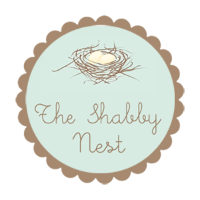One of my darling readers Kylee inspired a new series I want to do here, called "What Would Penny Wenny Do?" She emailed me with questions about how to refinish an old piano that she got for FREE. Yes, F.R.E.E. After getting over my intense jealousy, I decided that rather than just email her back with my suggestions, it would be fun to post her project here and share my tips/ advice/ suggestions for how
I would tackle the project if it were my own. I would also love to hear from you smarty pants about any great suggestions you might have for her!
If you have any projects of your own that you would like advice on, please shoot me an email and I would love to feature you as our next WWPWD post.
Without further adieu, I present to you Kylee's FREE (just in case you missed that the first time) piano.
You can see that this piano has probably seen better days and definitely needs some TLC. BUT, her bones are lovely! I am in love with the bench also. With some elbow grease and paint, this baby can be looking good as new very soon.
So my dear Kylee, here's what I would do.
It's hard to tell for sure from the picture, but it looks like the piece of wood below the keys is where the most damage has been done. It looks like the wood has been gouged pretty well, and just needs to be filled back in. I would take some Kwik Wood and fill back in the holes to try and re-create the shape that the piece once had.
Twice Lovely shared an awesome tutorial on how she used this product that you can check out
HERE. This product can be found at your local hardware store for around $5.
If there are other areas on the piano where chunks of wood are missing, fill those in as well with this product. The scratches and dings throughout the wood can be buffed out in the next step.
Use an orbital sander and buff down all of the flat surfaces on the piano. I would suggest starting with a medium sand paper, and work your way down to a fine sand paper. The medium paper (80-120 grit) will strip some of the stain/ varnish but most importantly help to buff out the scratches and dings.
If you intend to re-stain the entire piano, then you will need to do a very thorough job of sanding beginning with a coarse paper (60-80 grit), and should plan on spending quite some time to do that.
If it were my project, there's no way I would be willing to strip and re-stain the entire piano. This is where paint is your BFF. Don't stress when you sand about getting everything completely off. You just want to create a smoother surface to begin with. After you finish with the medium paper, you should repeat the process with a fine grit sandpaper (150-180 grit) to smooth out the surface. You can read more about the process of sanding from one of my previous posts
HERE.
For the hand carved or curvy places on the piano, I suggest sanding by hand with a medium and then fine sanding block. You want to focus on smoothing out the scratches, and creating a less glossy surface for your paint to adhere to.
This might seem like a silly step to mention, but it is often neglected by furniture fixer uppers, and shows on the finished product. There is nothing worse than a ruined paint job because of the dust specks that were neglected. Take some time once you are finished sanding to really clean up all of the dust. I would use a vacuum and go all around the piano and in all the nooks and crannies with the hose attachment. Lastly, I would use a rag and some cleaner or some Clorox or Lysol wipes and clean everything off really well.
So, here's where the fun begins. There are sooooo many different options for paints to use, and really I think you will be fine with whatever you choose. As a thrifty gal myself, I would recommend hitting up your local Home Depot and Lowes every day to look for oops paint.
For those of you who aren't familiar with this, hardware stores will discount paint that has already been mixed for a customer who didn't want it, or color was wrong and sell it to us fine folks for CHEAP.... like $5 a gallon on a normally priced $34 gallon of paint. My favorite product is Behr's Ultra Paint and Primer in One in a satin finish. It saves extra steps and money when you don't have to buy the primer separately. I have found this particular type in the Oops several times at Home Depot. Look for a color similar to the one that you want (or exact) and if you want it darker, ask the sales person to work on the color for you. If you intend to sell the piano when you are finished, I would suggest going with a fairly neutral color (like cream) that is more versatile to buyers. If it's going to stay in your family, don't be afraid to take a walk on the wild side and go for a fun bold color. If you can't stand the waiting game and want a specific color, you will likely need to pay full price for the gallon.
I believe HD has a $5 off each gallon of Behr sale running right now as a 4th of July sale.
I would use a small brush (Purdy) to cut in all the corners and intricate hand carved places and to go around the hardware, and roll with a small foam roller on all of the main flat surfaces.
I used to be so meticulous about taking everything apart on furniture and painting each individual piece one at a time, then screwing all of the doors/ hinges back on, etc. but I have since found it to be so unnecessary and such a waste of time. If you have a steady hand, just cut in carefully around all of the hardware and hinges. I would suggest however, taking off the base plate (or whatever it's called) around the foot pedals of the piano (can you tell I don't play???) and clean that off really well. If you want a more contemporary/ modern look you can spray paint that piece a hammered bronze or pewter, but I think it would add to the vintage charm if you keep it the original color.
This step is optional, but since this is a post for What Would
Penny Wenny Do, I'm telling you what I would do. I would lightly distress the edges, corners, and high points of the piano with a sanding block, allowing the wood to show through. Then I would glaze, wax, or stain in those same areas. There are so many techniques and options to do this. My personal preference (as of lately) is to use Minwax stain in a deep color like Dark Walnut or Jacobean, and very lightly apply it with a rag to the piece of furniture to the areas that you just distressed. You can read in more detail about how to accomplish that from a previous post of mine
HERE.
Last but certainly not least, I would apply a finishing protective coat. I would suggest using a clear wax that is soft enough to apply with a brush particularly in the nooks and crannies, like Annie Sloan clear wax, or Fiddes and Sons.
Note- I do love Minwax paste finishing wax (particularly for convenience of purchasing at HD and cost), but it is very thick so it clumps up in nooks and crannies, and only really works well on flat surfaces. If cost is an issue, a polyurethane coat will work great! I would suggest using Minwax Polyurethane in the satin finish, and apply it the same way that you did the paint (foam roller and brush), but apply several coats with a very light sanding of extra fine sandpaper between each coat to eliminate any of the bubbles it creates.
Because I am Penny Wenny, you know that I just wouldn't be able to finish this project without some sort of fabric or pattern action happening. I think you should totally upholster the piano bench!!! If you haven't upholstered anything before, this is actually one of the simplest upholstery projects to start with. Find a fun fabric on sale at Home Fabrics, or online at Fabric.com, get some foam from your local DI for $1, borrow a friend's pneumatic staple gun, and have some fun! You can refer to my tutorial
HERE on how to upholster a simple rectangular shape where there wasn't anything there before.
So, easy as 1, 2, 3, right? Please know that my suggestions are
not the only way that you can refinish this. Brooke from
All Things Thrifty recently finished an amazing piano of her own using spray paint, that looks phenomenal and can be viewed
HERE. I hate all of the taping required to spray paint, so I would opt for the brush and roller but you need to do whatever works best for you.
Alright friends- now it's your part. Pipe in please in the comments section (kindness only, please) if you have any other great suggestions or tips for Kylee when she finishes this beauty.
Once Kylee is finished with this fabulous project she just committed to (especially now since we shared it here) I will post her end results here. GOOD LUCK KYLEE!
Please remember to send me any projects you have questions on. And for those of you dedicated readers who stuck it out to the end of this lengthy post, check back soon for an
Annie Sloan Chalk Paint and Wax giveaway.... yes you read that right. See you soon friends!
xoxo
~PW



































Love the blog tittle...so cute! You got a nice space here. Beautiful!
ReplyDeleteHope to see you on my blog:)
Great tutorial. I redo pianos as well for a company. One suggestion I would have, (this was the requestof the piano tuners) make sure you take the pieces around the keys off and the strip of wood under he keys, otherwise yo take the risk of sealing the pieces together and makes it tough for a tuner, and the paint takes the risk of beining damaged. I love seeing other pianos, it gives me inspiration. Thank you.
ReplyDeleteKathryn
Have you seen this? http://www.designmom.com/2009/05/painted-piano/ I LOVE the bright color there!
ReplyDeleteGreat post, my dear!
xox
Just a tip: if using oil base stain or poly be sure to stir it and not shake it. When you shake oil base that's when you get those annoying bubbles. You'll still want to sand with fine grit sand paper between coats but the bubbles will be considerably less.
ReplyDeleteIt's amazing how to most people a broken piano would have no value but to a artist. A broken piano redone visually could be a great decoration for a home.
ReplyDelete-Zane of ontario honey